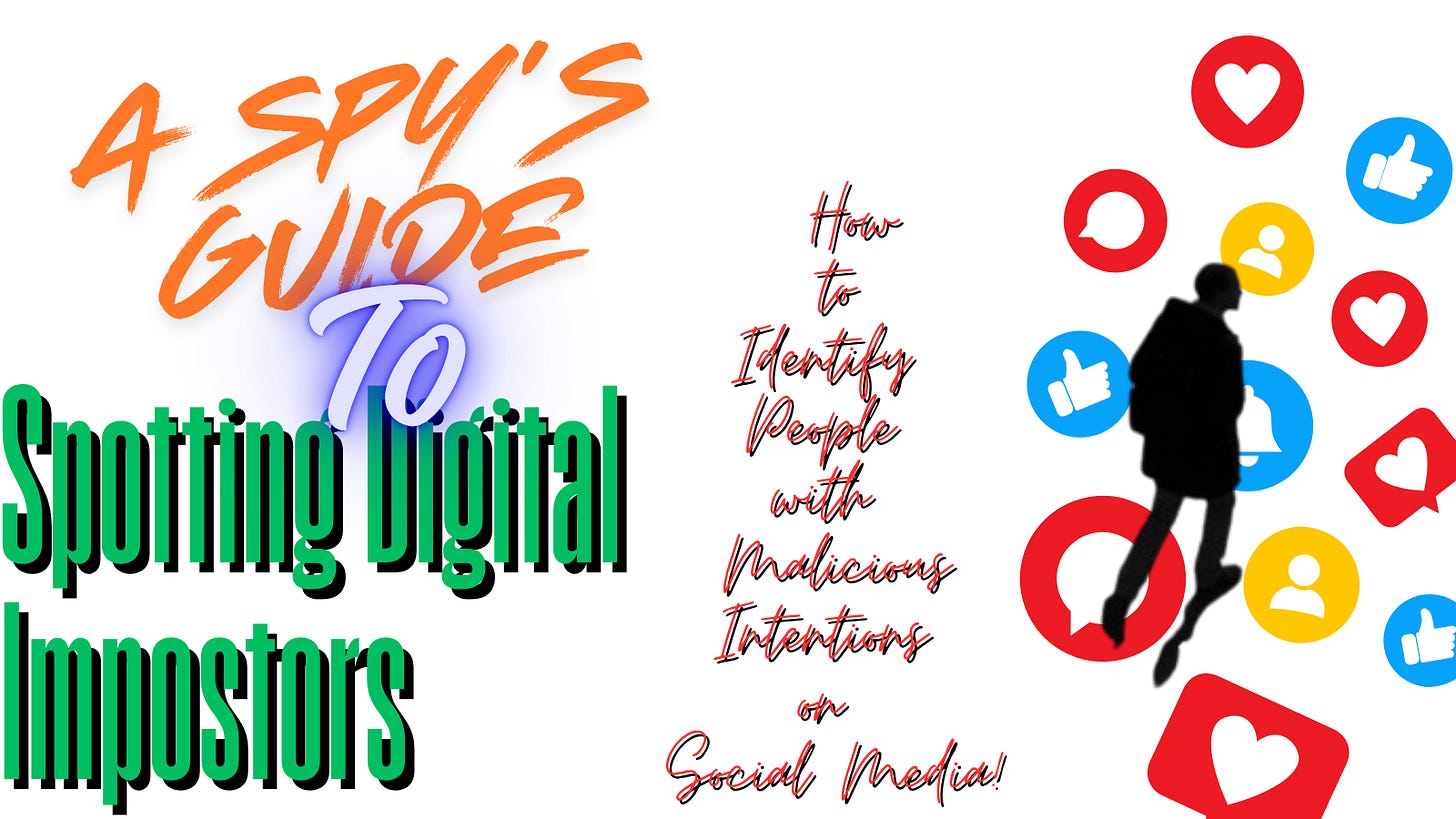🕵️♂️ A Spy’s Guide To Spotting Digital Impostors
How to Identify People with Malicious Intentions on Social Media
Ujasusi Blog Originals Series | 🗓 27 June 2025 | ⏰ 0445 BST
🌐 When Activism Meets Surveillance
In today's world, activism no longer lives solely in the streets—it thrives on screens. Hashtags spark revolutions, tweets mobilise protests, and DMs build alliances. But for those challenging power, this digital empowerment comes with a price: constant monitoring, manipulation, and infiltration. And not always by men in dark suits or women with hidden earpieces—but by ordinary people with extraordinary malice.
Most online surveillance doesn’t come from professional spies. Instead, it is executed by an insidious layer of “digital impostors”—friends who aren’t friends, followers with hidden motives, or strangers with a script. Whether motivated by fear, money, ideology, jealousy, or simply political loyalty, these individuals lurk within digital communities of dissent, posing as allies while acting as eyes and ears for the state—or worse.
This guide equips you with the mindset and tools to recognise them early.
🧠 Why You Must Be Cautious
“Espionage isn’t always about secrets—it’s often about access.”
In repressive environments, the regime does not need intelligence officers in every space. It recruits or co-opts civilians—party loyalists, cyber patrol volunteers, morally compromised informers, or even former activists—tasked with:
Reporting posts and people to the authorities
Triggering entrapment schemes through DMs or fake causes
Doxxing or data collection under the guise of solidarity
Spreading confusion, paranoia, or division
Provoking reactions that justify arrest or harassment
They may not be highly trained, but they can be lethal to your safety, your work, and your networks.


